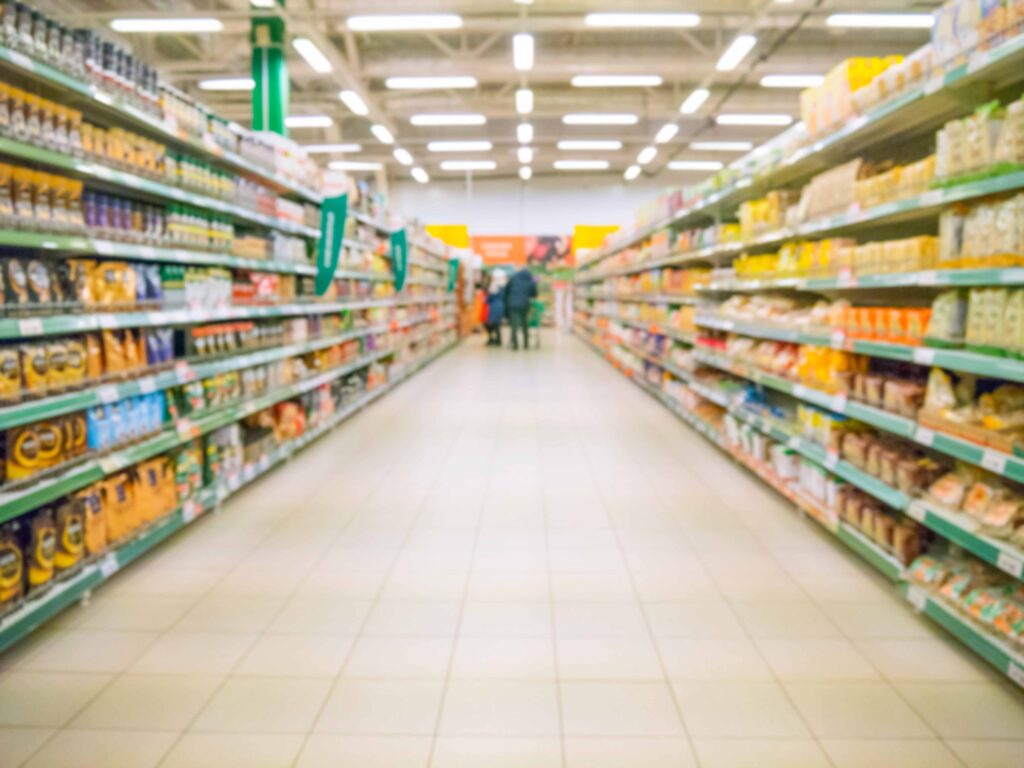Originally intended for diabetes treatment, GLP-1 drugs have gained popularity for weight loss, significantly shifting consumer behavior and affecting the food industry.
A recent study from the Cornell SC Johnson College of Business Research paper (January 2025) found that GLP-1 drug adoption increased from an estimated 5.5% of the population in October 2023 to 8.3% in July 2024 (Hristakeva et al., 2024). While this may seem modest, it is important to remember that these drugs are relatively new (Ozempic was approved for commercialization in December 2017) and are experiencing rapid growth. According to the study, GLP-1 market value is estimated to reach $50 billion by the end of 2024 and is projected to double by 2030.
Demographically, users for diabetes management are primarily older (55+), while those using it for weight loss are more evenly distributed across younger and middle-aged groups.
Regardless of the reason for adoption, the study revealed that GLP-1 users reported an average weight loss of 47 pounds, with a median loss of 40 pounds. This closely aligns with clinical trial findings and has significant implications for the food industry.
One of the side effects of GLP-1 drugs is reduced food consumption, primarily due to appetite suppression and nausea. Consequently, this leads to lower food purchases among individuals taking these medications.
Households with at least one GLP-1 user reduced grocery spending by approximately 5.5% within six months of adoption. In financial terms, with an average monthly grocery spend of about $630, this 5.5% decline corresponds to a $416 reduction in annual food purchases for each household. Higher-income households, earning over $125,000, cut their grocery spending by 8.6%, equating to an annualized decrease of $690 – more than double the 4.2% decline ($270 annually) observed in households earning less than $125,000.
However, the reduction in food purchases is not uniform across all food categories. The most significant declines occur in ultra-processed, calorie-dense items like chips, savory snacks, sweet bakery goods, sides, and cookies, with reductions ranging from -11.1% to -6.7%. Interestingly, the study did not identify an increase in spending on traditionally considered healthier products, such as fresh produce or whole grains, among all adopters. This indicates that spending reductions stem from buying fewer items rather than switching to alternatives.
These findings are compelling in their own right, yet this is a recent trend and much remains to be understood regarding the long-term behavioral and market effects of these drugs’ adoption. The study indicated that the reduction in food spending diminishes after six months but remains negative. When examining the two adoption groups, the researchers found that spending reductions stayed approximately the same after six months for users taking GLP-1s for diabetes, while for those using them for weight loss, the total change in the second six-month period was not statistically different from zero.
What does this mean for the food and agriculture industry?
With growing concerns about food consumption and its relationship to health, particularly conditions like obesity, high blood pressure, diabetes, and others, the industry is beginning to consider how this will impact food production systems and what will be demanded in the future. The concept of healthy eating is not new, but with the introduction of drugs such as GLP-1s, the effects of lifestyle and diet changes are reaching a new level. Moreover, the rate at which these changes are occurring, driven by the effectiveness of these drugs, is unprecedented. As a result, shifts in consumption patterns are more evident than ever. In this context, companies in the value chain need to explore how to respond to these trends and capitalize on them, turning uncertainty into opportunities for disruptive innovation, growth, and competitive advantage.
The first point to consider is the strength of this change—whether it represents a significant shift or merely a fad that will fade. If this is a genuine direction in which the market is heading, resulting in lasting changes in food consumption, companies must consider the implications of these changes and create scenarios that will demand different strategies, resources, and processes to address them. On the other hand, if this is simply a fad, businesses will need to develop strategies to protect themselves from temporary shifts until things return to normal.
From an objective standpoint, the aforementioned study demonstrated significant growth in the adoption of GLP-1 medications for both diabetes management and weight loss. The latter is more prevalent in higher-income households and among younger populations. These indicators, combined with the rise of weight-related health conditions over the past few decades, suggest a strong driver of sustained change in consumer behavior and food consumption. However, the study also showed that changes in food purchasing were not statistically significant for weight loss users, and no shift in food type was observed – only an initial reduction in calorie-dense and ultra-processed items. Given that over 90% of the population does not currently use these medications, this may suggests caution in diving headfirst into completely overhauling one’s food systems.
Now, let’s conduct a simple scenario analysis exercise to explore the potential implications of a situation where GLP-1 drugs are here to stay and fundamentally change food consumption versus one where this is merely a transitory movement.
If GLP-1 drugs have a lasting impact, agricultural and food production companies will need to adapt. For food manufacturers, the trend represents a significant shift in revenue from ultra-processed and calorie-dense products, which are a substantial part of their portfolios. These companies will likely need to redirect resources to produce more nutrient-dense, calorie-light options. This change could involve a major realignment in R&D, marketing, logistics, and procurement, with a decrease in focus on carbohydrates and an increase in focus on proteins.
For agricultural production, this could result in a regional diversification of crops, with less-processed foods (like leafy greens, fresh vegetables, fruits, and nuts) grown closer to consumers. This would reduce the length of value chains and alter existing links within them, transforming inter-organizational relationships. Another possibility is a shift in the desired attributes of crops, such as higher-protein soybeans or different oil types, which would impact yield-based revenue models.
Regardless of how this trend unfolds, companies aiming to take advantage will need new resources and capabilities. Investing in people, assets, and fostering an innovative culture will be key.
If the adoption of GLP-1 drugs is merely a fad, companies will likely adjust their messaging to emphasize health-related products in their portfolios while the trend lasts. Minimal to no changes in assets or capabilities would be required, although competitors may seize the opportunity to establish a foothold in the market.
This scenario is important because about 90% of people do not use these drugs, and many may never adopt them. Additionally, consumer preferences are highly consistent: Taste is the top priority, followed by affordability, with nutrition ranking third (Purdue CFDAS, 2025). These preferences are not aligned with the concepts driving GLP-1 adoption but relate more closely to ultra-processed and calorie-dense foods.
As decision-makers in the agrifood value chain, we must consider these potential scenarios when developing strategies for our companies. Being innovative, agile, and creating flexibility in plans will be crucial for success, whether during short-term fluctuations or long-lasting changes. The adoption of GLP-1 drugs is not the primary cause of change but rather a manifestation of a growing desire to alter our relationship with food, improve health, and shift the balance of power between food providers and consumers. We, along with our industry, can choose to be bystanders or take the lead in developing a system that meets consumer needs while ensuring we continue to provide the most affordable, sustainable, and safest food in the world.





